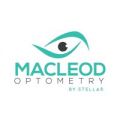3 Effective Ways to Protect and Preserve Your Eye Health

Most eye diseases, including macular degeneration and cataracts, are irreversible and progressive, hence they require proper management. Sometimes, doctors can offer surgical or pharmaceutical options to slow down the progress but not reverse it. Unfortunately, there is no proven natural remedy for cataracts, but there are some promising treatment options for eye diseases.
Do you know about neurogenesis? Scientists have found that the growth of new neurons in the hippocampus of the brain plays an essential role in disorders such as Alzheimer’s and dementia and affects emotional behavior and cognition.
It’s also known that people with increased BDNF (brain-derived neurotrophic factor) levels have a lower risk for neurodegenerative disorders, including Alzheimer’s disease. This is due to the fact that BDNF plays a crucial role in stimulating neuron growth in the CNS.
So, why are we discussing neurons in the brain when the topic is eye health? By exploring the regeneration of neurons in the brain, scientists started to find where else the regeneration of neurons could take place. Since the eyes are a part of the CNS and grow from the brain during fetal development, it’s all connected. Scientists have found that the eyes have cells that can also regenerate.
How can we protect and manage our eye health? Regeneration therapies can help. These therapies are aimed at regeneration and stimulation of the growth of retinal ganglion cells. Currently, there are three unique ways that seem to be really effective:
1. Reprogramming therapies
Reprogramming therapies obtain other retinal cells for reprogramming into retinal ganglion cells. There are other species of animals that are able to do this naturally like zebrafish. This method might be helpful in treating different eye diseases like macular degeneration and even genetically inherited retinal disorders.
2. Stem cell therapy
Stem cell therapy can also help us grow retinal ganglion cells. Stem cells are cells that are grown in laboratories and are transplanted into the retina. This method is not as easy as it seems. It can take weeks to create sufficient quantities of stem cells, and the storage of these cells is very complicated since you don’t know when the patient will need them.
3. Preservation therapies
Preservation therapies are used to maintain eye health by maintaining the retina’s structure so it can be transplanted or regenerate retinal ganglion cells to restore vision. Preservation therapies can be especially helpful for people with a family history of eye disease or a genetic predisposition to eye disease.
Can I stimulate ocular regeneration at home?
As we can see, the future of regenerating eye health seems to be promising. Experts have achieved big progress in developing therapies, however, it might take some time for these treatment options to become widely available.
The brain-derived neurotrophic factor is essential for the neurons in the eye. Applying a brain-derived neurotrophic factor to the eye significantly improved the survival of retinal ganglion cells. This means that we might be able to treat eye damage caused by traumatic injuries or degenerative diseases by boosting the levels of a brain-derived neurotrophic factor.
While scientists are still exploring these methods and are looking for evidence of their effectiveness, you can use some options recommended by eye experts:
- Maintain a healthy weight.
- Stay physically active.
- Consider intermittent fasting.
- Get enough omega-3 fatty acids.
- Get 30 minutes of sunlight per day.
- Incorporate fiber into your diet.
- Avoid sugar and processed foods.
- Consume more foods rich in zinc.
- Consider adding resveratrol and other polyphenols to your diet.
- Drink antioxidant-rich green tea.
- Sleep well.
- Lower your stress levels.
- Consume more magnesium-rich foods.
It’s known that we have to regularly check our eye health to identify eye disease at an early stage and stop its progress. Currently, scientists know that not only can we prevent visual deterioration, but we are also able to potentially reverse damage from eye diseases and injuries.
Other articles and publications:
Articles and publications of other companies:
- +1 (646) 270-9836
- Long Island City
- grantny.com













